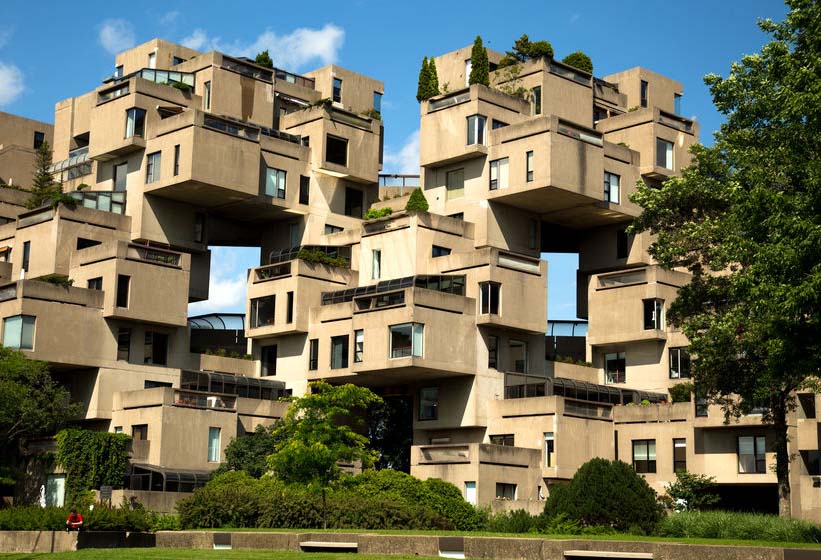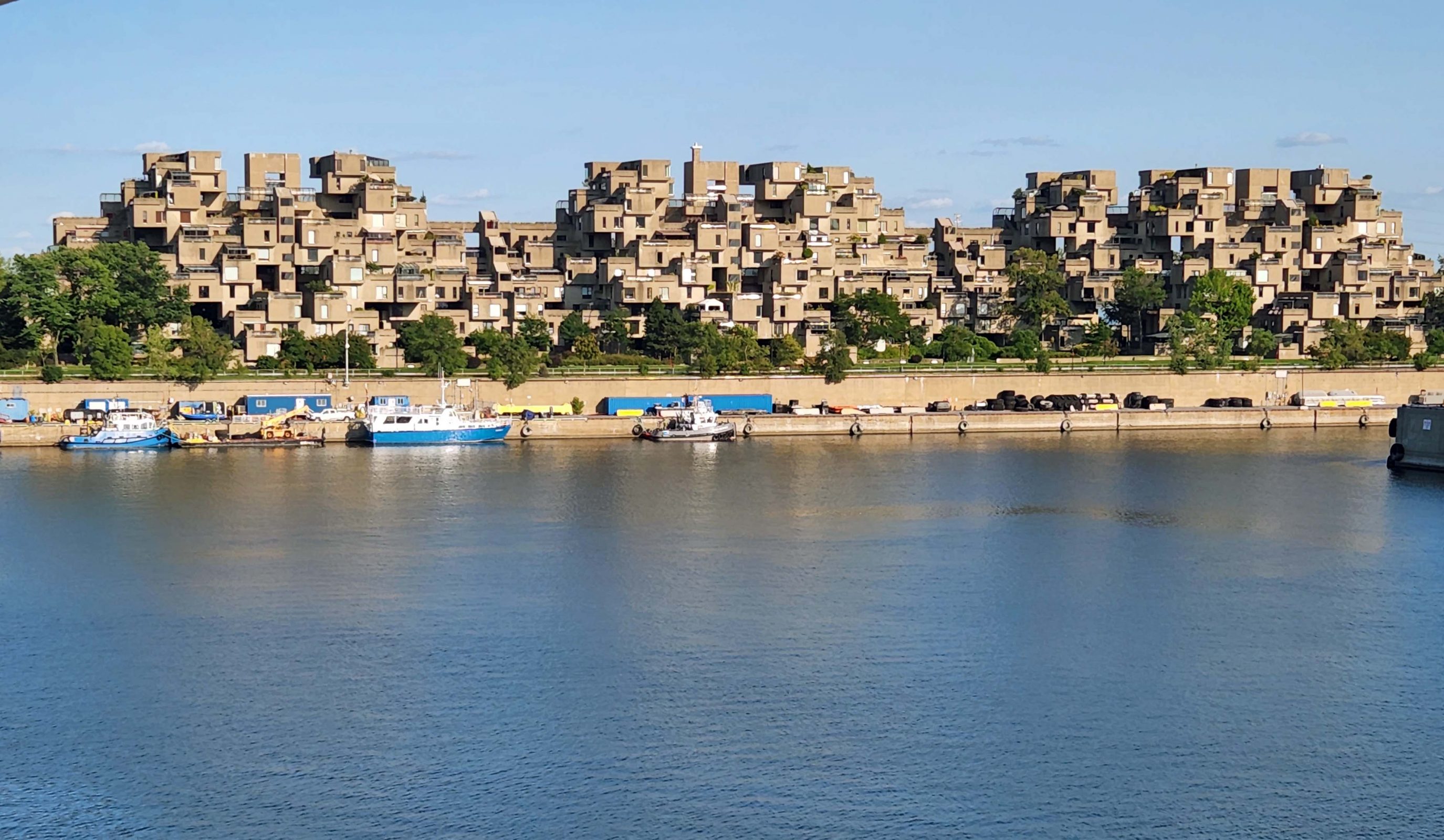Yesterday, we checked out of the hotel and moved into our stateroom on the cruise ship. The hotel lobby was a madhouse and the lines were long, but lunch was ready when we boarded the ship. The best thing about cruising: we unpacked our suitcases, put everything into drawers and on hangers, and won’t have to re-pack until we leave the ship 12 days from now.
We met three other couples at dinner and had a good time. The hostess who seated us asked me, “How are you?” “I’m fine,” I replied. “You look tired,” she said. “I am,” I responded. She smiled at me and said, “Check with me at the end of the cruise.” Her comment might not have been tactful, but it was true. Ted and I have been working 10-12 hours every day for the past three weeks to get ready for the interior house contractors, the exterior door contractor, the landscape designer, and the cruise! Yes, we’re exhausted, and we’re ready to get away and relax. “Respect,” the biopic movie about Aretha Franklin, was playing in the onboard theater after dinner, so we watched that and enjoyed the free popcorn before going to bed.
We slept in this morning and then took a three-hour walking tour of Old Montreal after lunch. The tour guide mentioned a number of things that are similar about Montreal and Quebec City. Not surprisingly, Montreal’s claim to fame was always a little bit better than Quebec City’s. For example, although Quebec’s total provincial population is about 8 million, the city of Montreal within the province has 4 million of those people, compared to Quebec City’s population of just over a half million people. City pride and friendly (I hope) rivalry was hard at work throughout the tour.
Montreal is on an island and, with those millions of people, there’s a scarcity of parking places. To make up for that shortage, the city has great public transportation and 700 km of bike trails. There are lots of underground walking tunnels as well, which I’m sure are a good thing in the winter. Our first stop was Notre Dame, a cathedral that is built entirely of wood (inside and out), but has been painted to look like the stone European cathedrals. It has a pipe organ with 7,000 pipes and 4 keyboards; seating for 3,000 worshippers; and a ceiling painted Virgin Mary Blue with 24k gold stars.
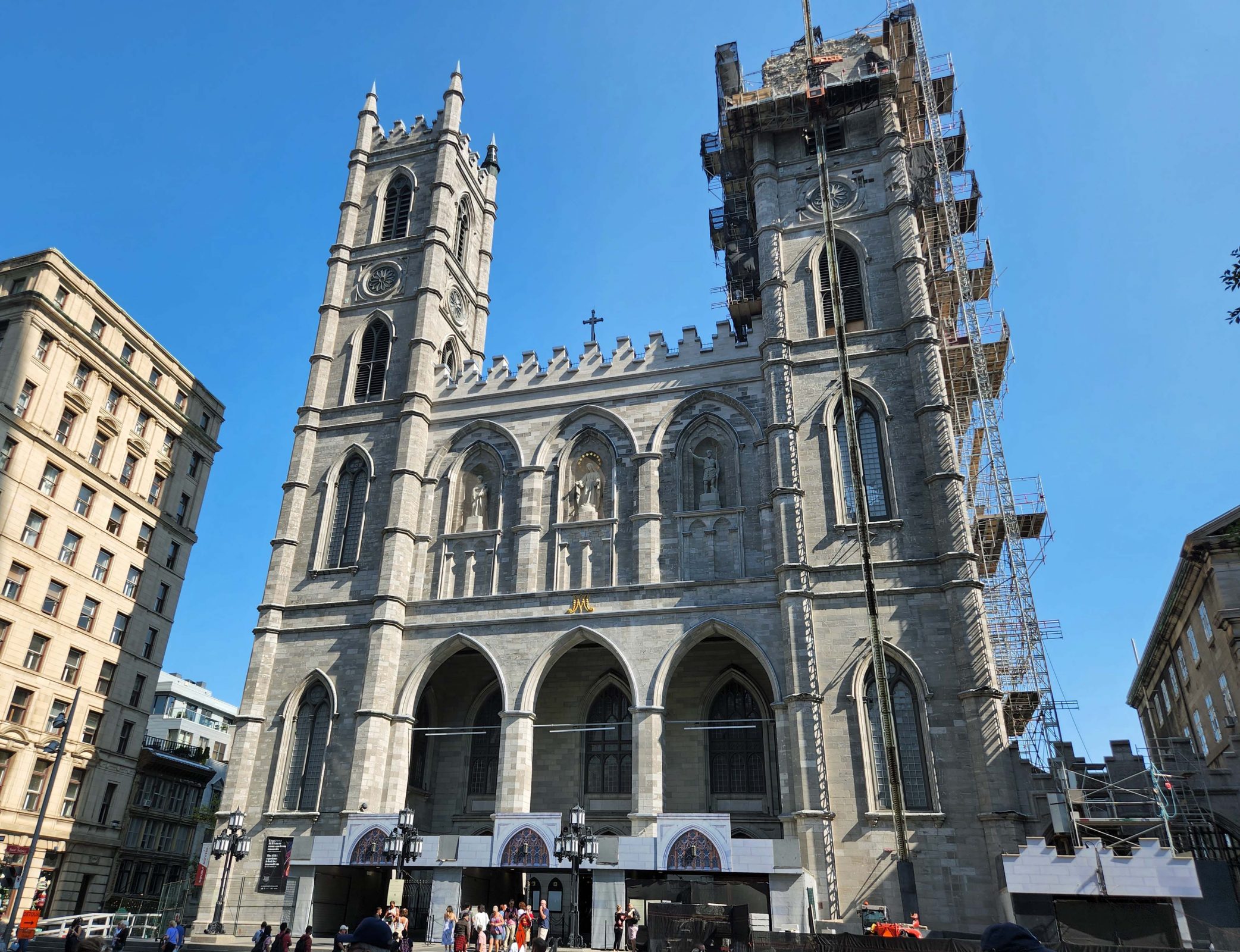
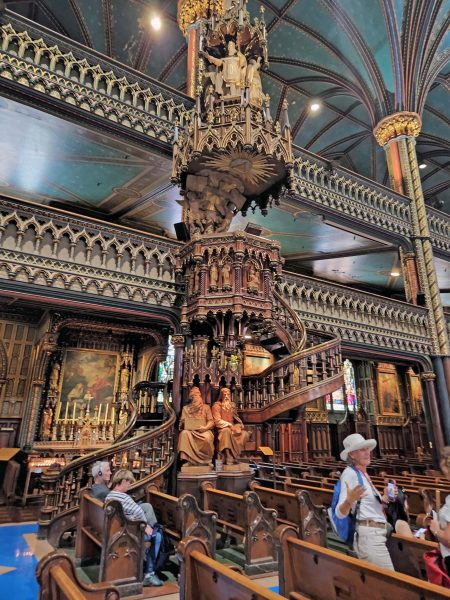
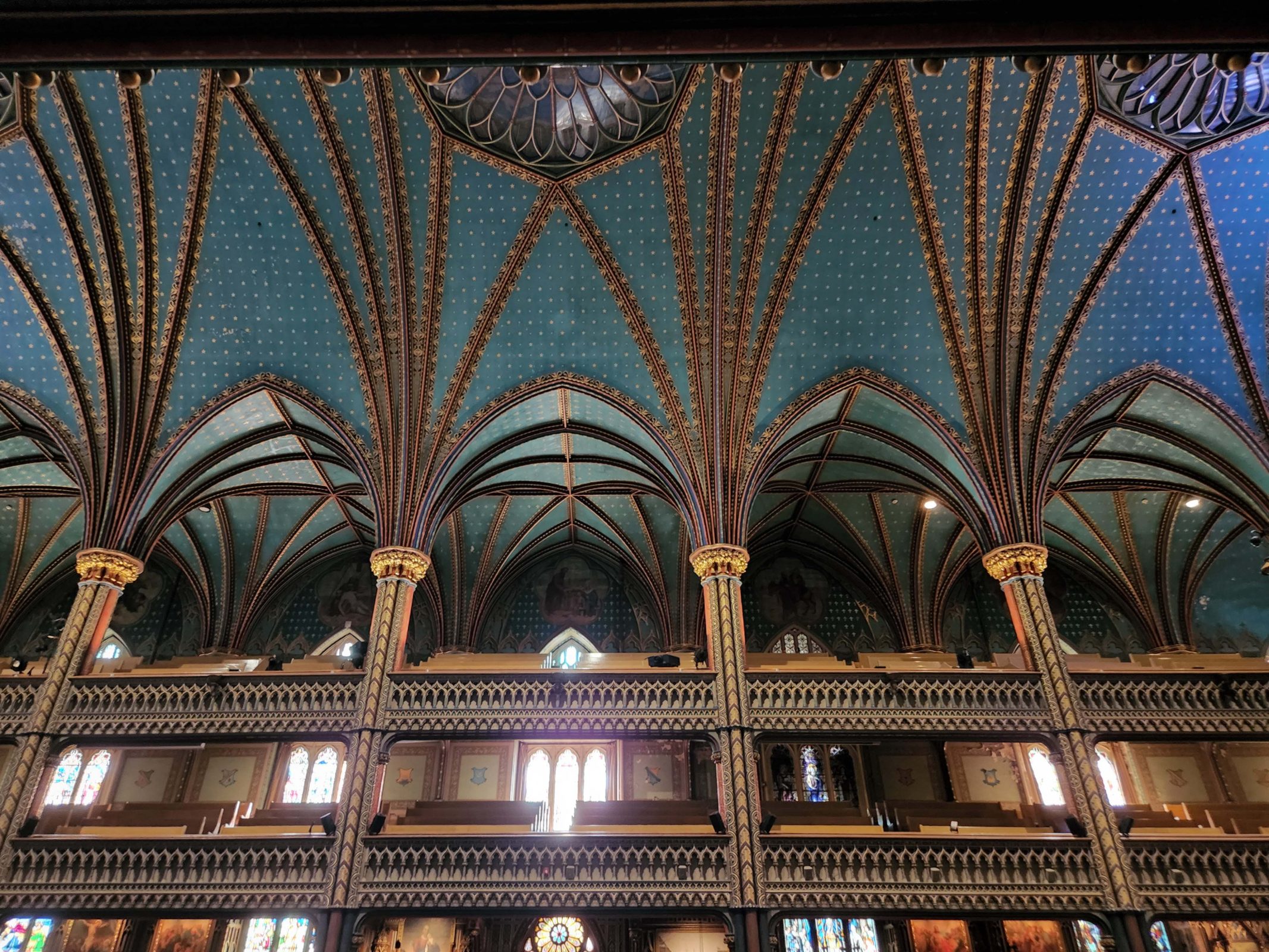
We took an elevator to the observation deck at the top of the Museum of Archeology and History and had a nice overview of the city and of the Crooked Bridge. The bridge’s real name is the Champlain Bridge, but it has three curves, so everyone calls it the Crooked Bridge. Within the museum, I saw an interesting early pencil sharpener. (The overhead light reflections were unavoidable.)
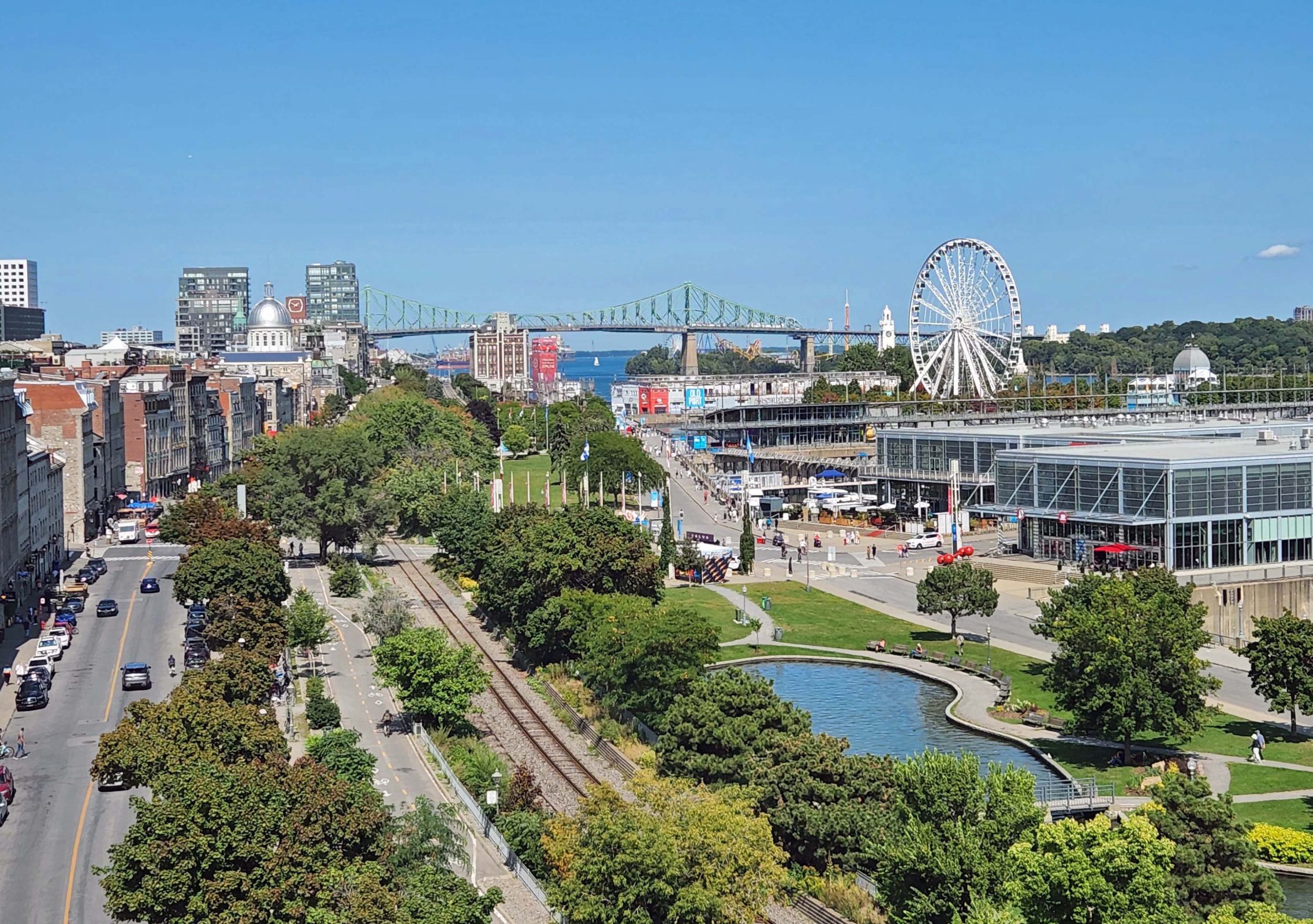
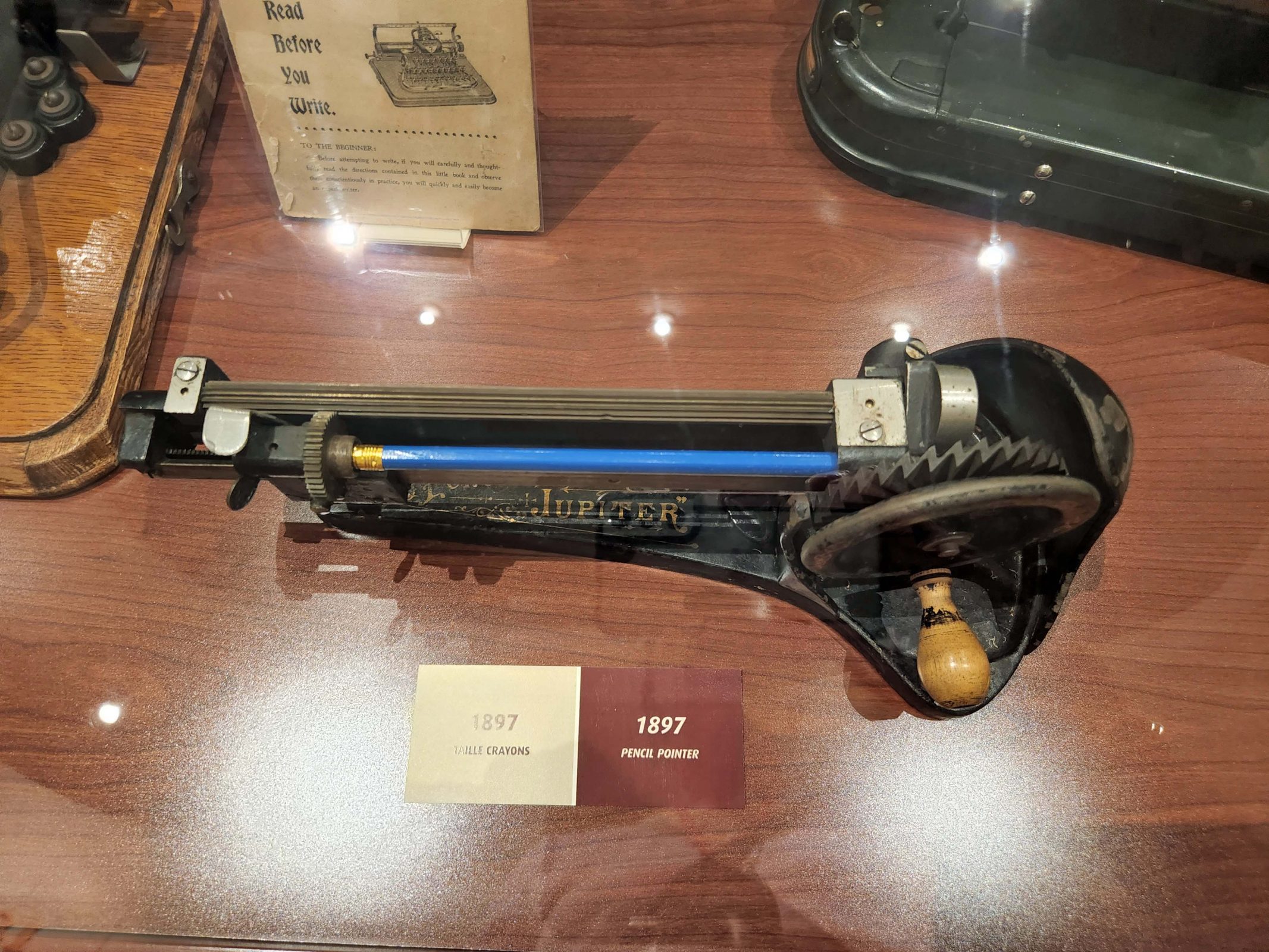
In the summer, pianos are placed in many places around the city. We saw at least a half dozen and there was someone playing every one of them. (The man in the left picture had just finished playing.)
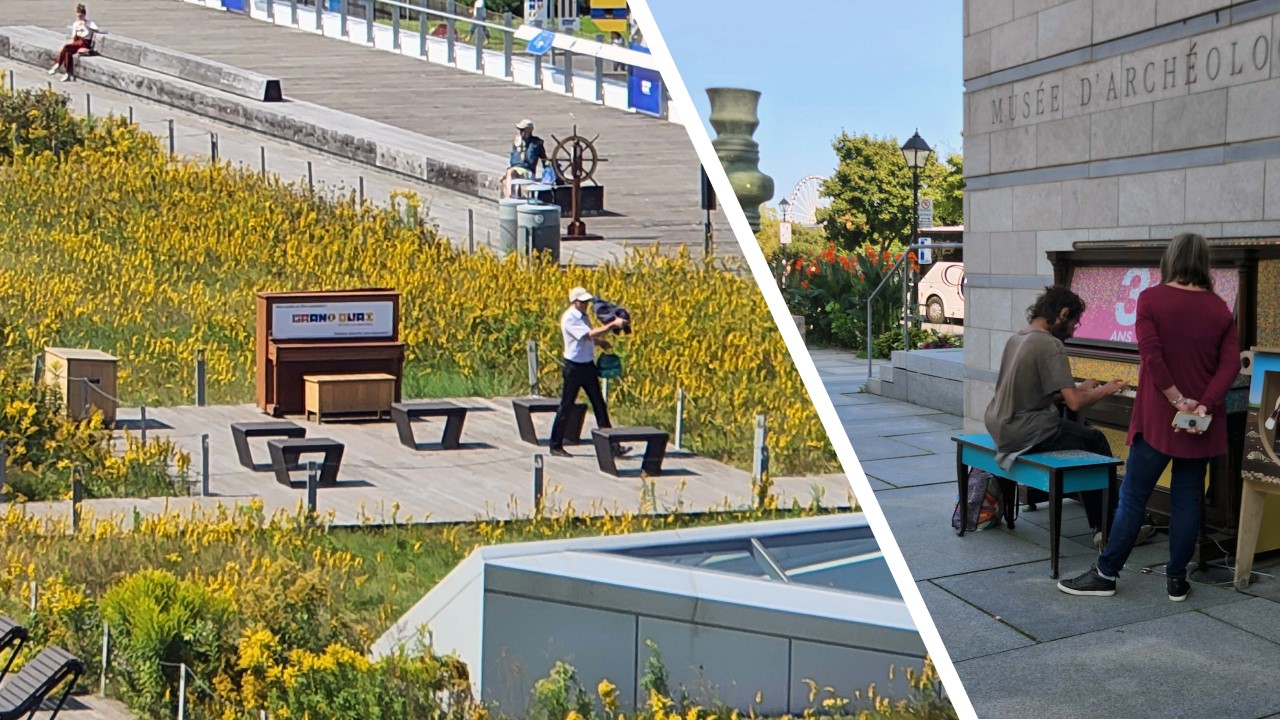
We visited a huge business complex that is built underground and has two levels of multi-story stores and offices as well as three levels of subway tracks. Here’s a reflecting pool and a sculpture within the complex (upper photo, below). The lower photo faces the open (downhill) end of the building. There are subway tracks on each end of the complex and the guide told us the tracks on the other end (uphill) were underground but above this level of the building.
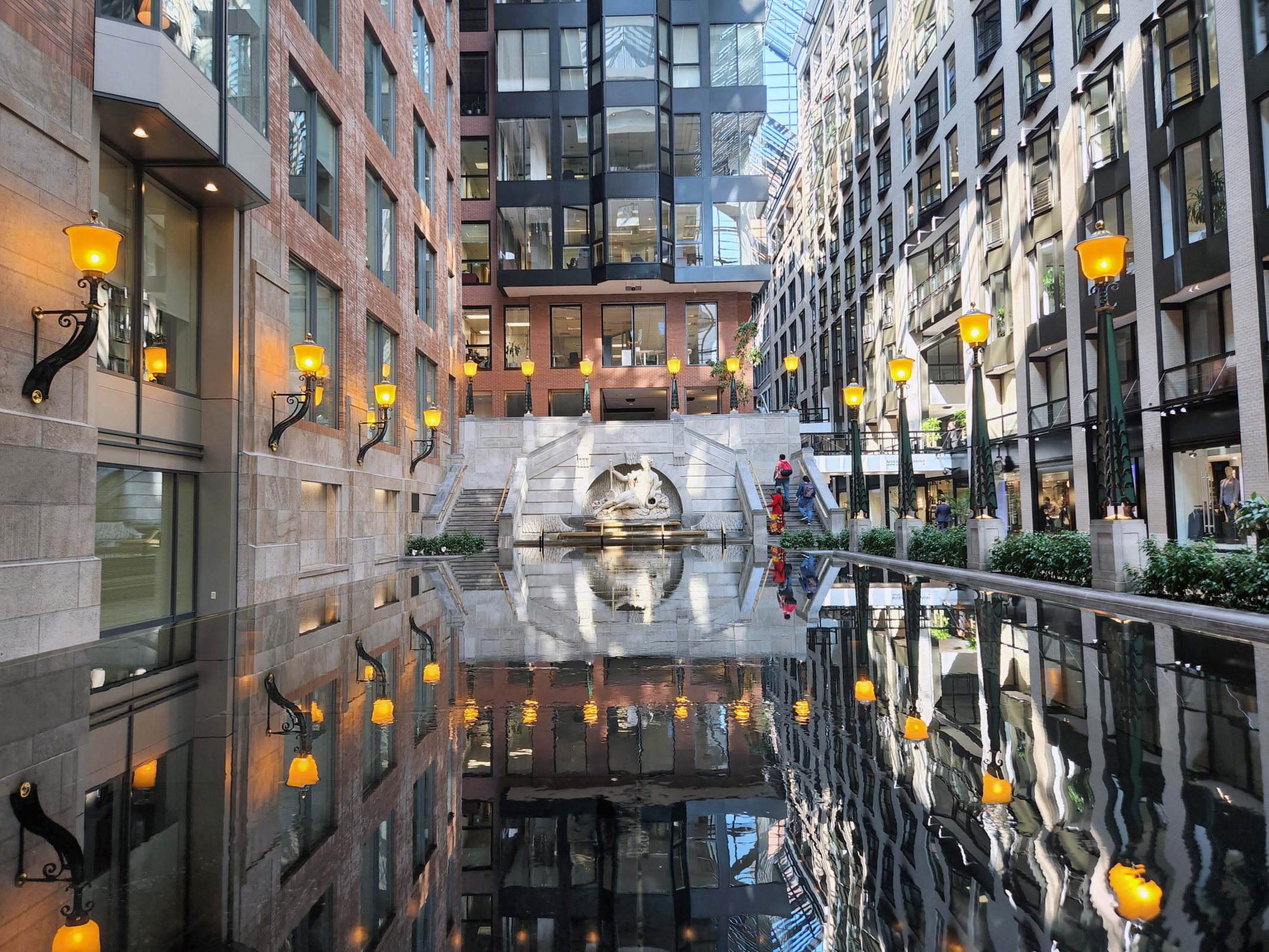
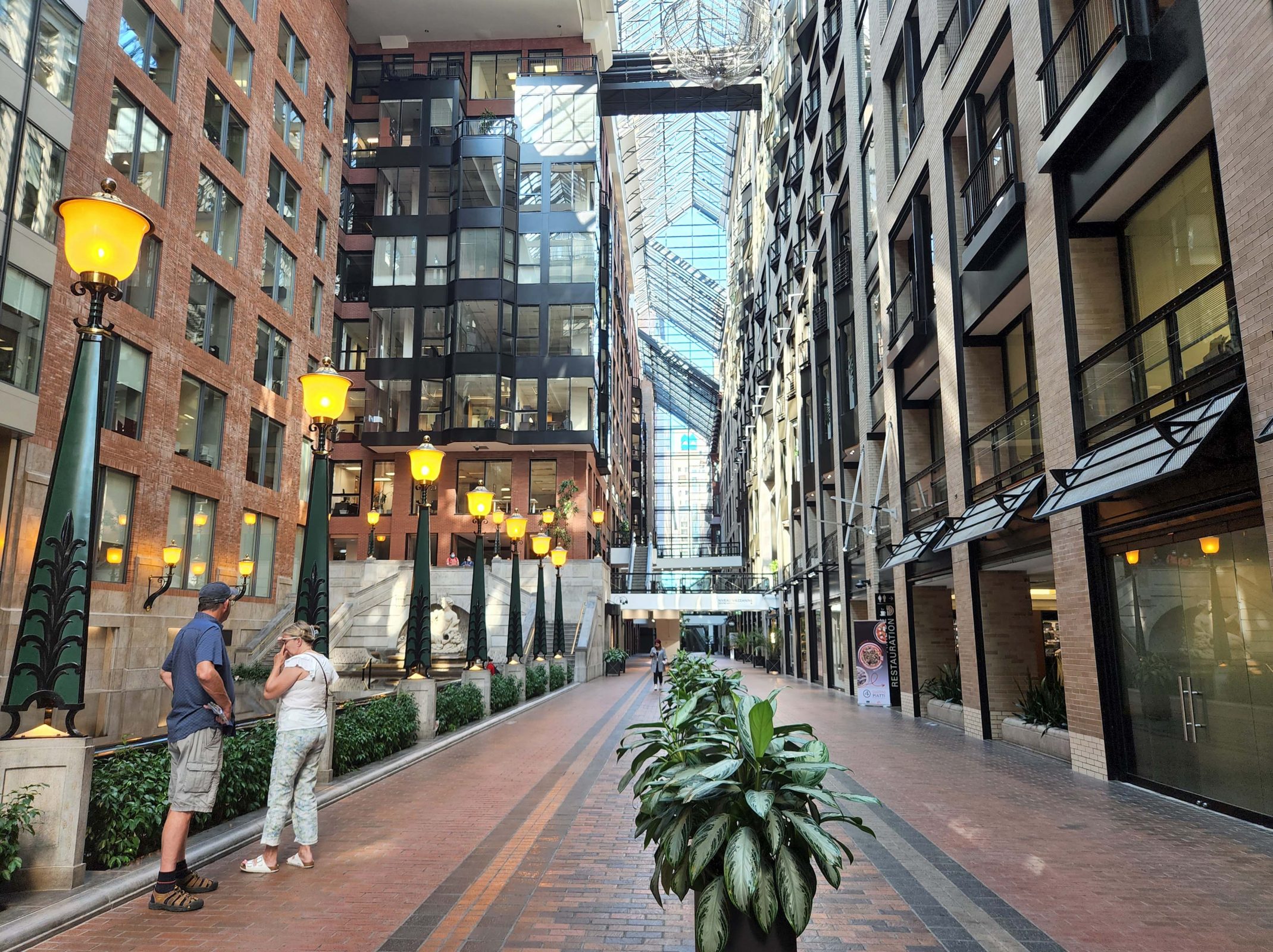
A lot of dirt had to be moved to build this structure and the excess dirt was used to fill the river and create an artificial island. The 1967 Montreal Expo/World’s Fair was built on that island. Most of the buildings were built as temporary structures for use only during the Expo, but the French and U.S. pavilions are still in use. The U.S. pavilion for space exploration now houses agencies focused on green energy and includes a biosphere. On another artificial island (also built with fill dirt), there is a Formula 1 racetrack. When there are no races, the track is used for skating, running, biking, track events, and even cars.
After our walking tour, Ted and I had some time on our own. It was hot, so we grabbed some more Cherry Garcia ice cream at another Ben & Jerry’s shop before re-boarding the ship to leave Montreal. On our way downriver, we saw Habitat 67, or what is called the “Cubes.” They were designed by a young architect in a competition to promote a “new” Montreal. His first model of the structure was built with Lego bricks. In 2012, Habitat 67 won the design competition to be Lego’s architectural set of the year. In general, four cubes make up a living unit. They are luxuriously furnished and can be rented for about $2,900 CD per month or purchased for roughly $1 million CD for a 1,000-1,200 square foot section. I found the first photo on the internet. The second photo is mine, taken as we left Montreal and headed for Quebec City, tomorrow’s destination.
